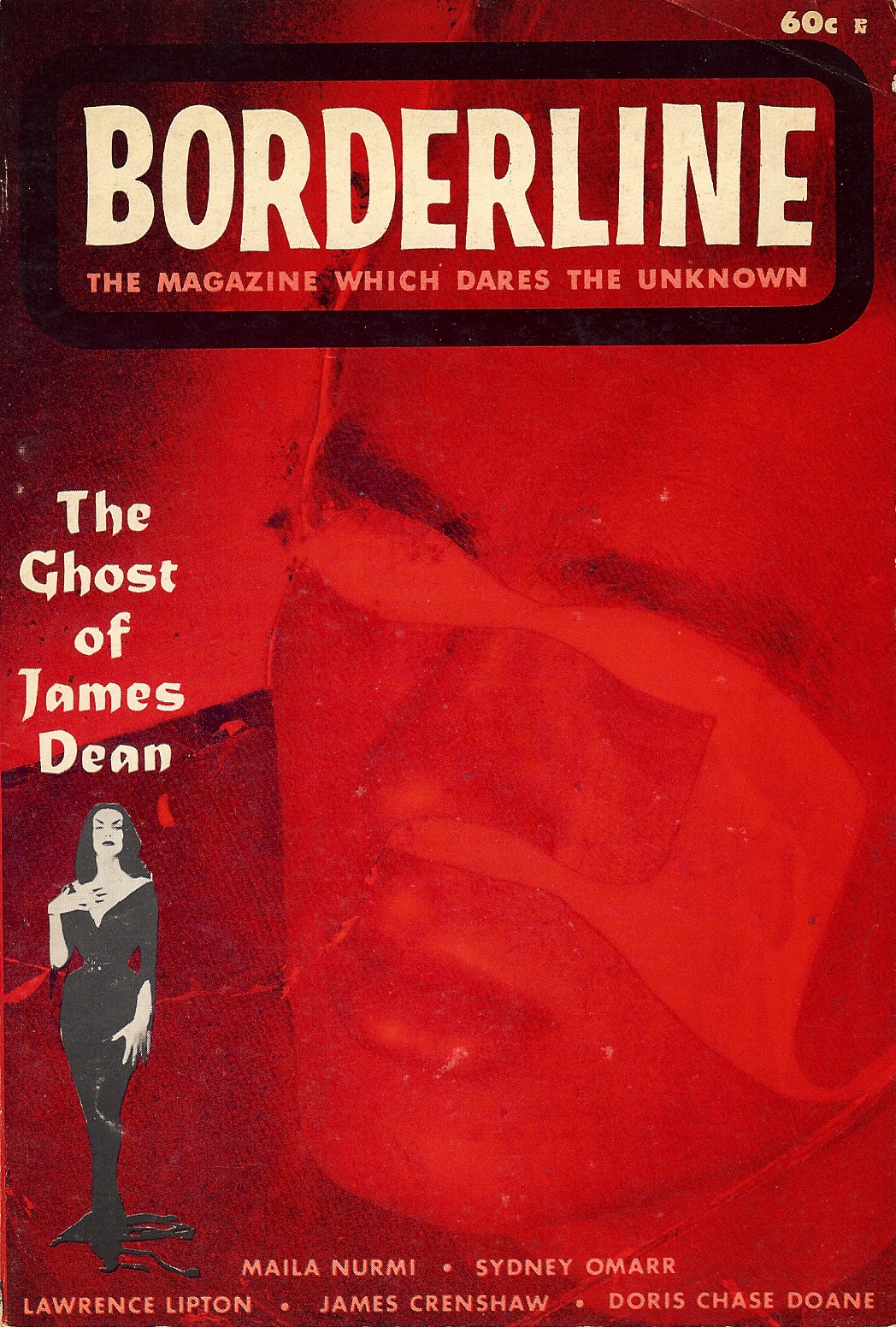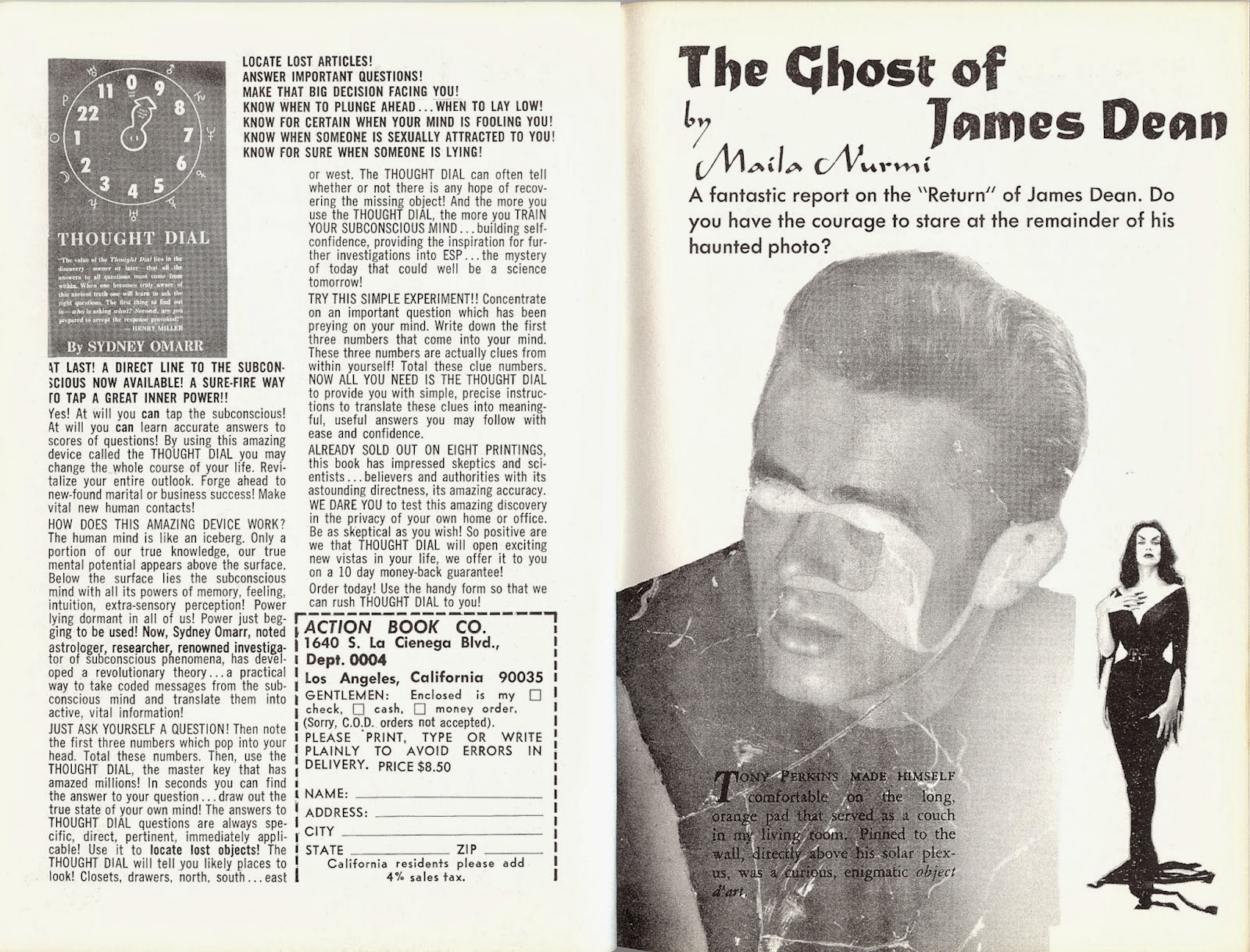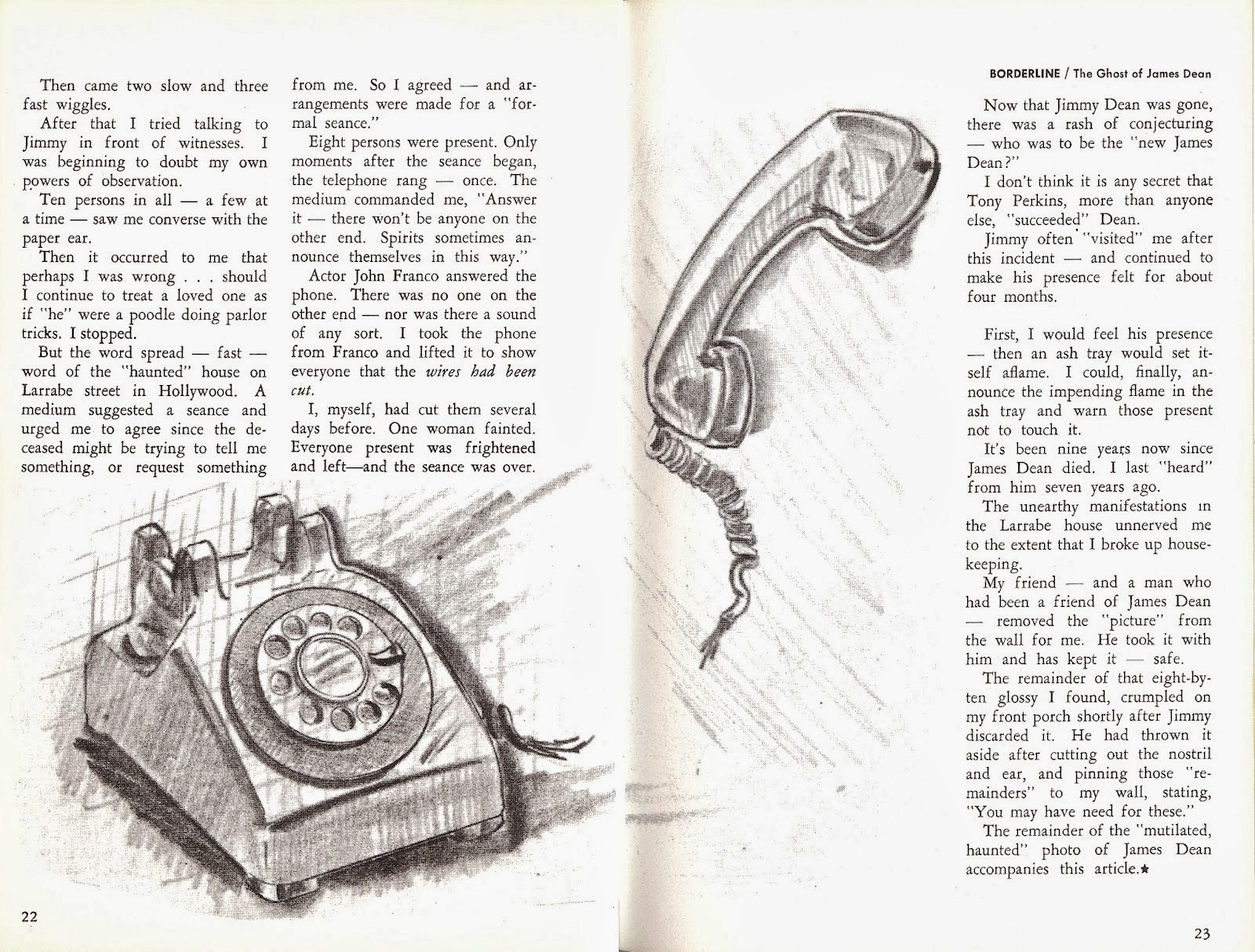Maila Nurmi & James Dean: Unraveling Their Hollywood Mystery
Table of Contents
- Biography of Maila Nurmi: The Woman Behind Vampira
- James Dean: The Rebel Without a Cause
- The Intersection: Maila Nurmi and James Dean
- The Enigma of Their Relationship
- The Impact on Their Legacies
- Hollywood's Dark Side and Unseen Narratives
- Beyond the Stardom: Their Enduring Influence
- Preserving Their Stories: Why It Matters
Biography of Maila Nurmi: The Woman Behind Vampira
Before delving into her connection with James Dean, it's crucial to understand Maila Nurmi's own extraordinary journey. Born Maila Elizabeth Syrjäniemi in Petsamo, Finland (now Russia), on December 21, 1922, Nurmi was a woman of striking beauty, unconventional intelligence, and an artistic spirit that defied the norms of her time. Her path to becoming a cultural icon was anything but conventional, marked by a relentless pursuit of artistic expression and a profound understanding of theatricality.Early Life and Artistic Roots
Maila Nurmi's family immigrated to the United States when she was a young child, settling in Ashtabula, Ohio. From an early age, Nurmi displayed a unique sensibility, drawn to the macabre, the mysterious, and the avant-garde. She was a voracious reader, deeply influenced by literature, art, and the burgeoning counter-cultural movements of the mid-20th century. Her early career saw her dabbling in various artistic pursuits, including modeling, acting, and even working as a showgirl. She moved to Los Angeles in the 1940s, immersing herself in the bohemian circles of Hollywood, where she cultivated a reputation for her eccentric style and sharp wit. Nurmi was known for her striking appearance, often seen in dark, flowing garments, long black hair, and an almost otherworldly aura that set her apart from the typical Hollywood starlet. This distinct personal brand would eventually coalesce into the character that would define her legacy.The Birth of Vampira: A Cultural Phenomenon
In 1954, Nurmi's unique aesthetic found its perfect outlet. She was approached by KABC-TV to host a late-night horror movie show. Drawing inspiration from Charles Addams' cartoons and the macabre elegance of Morticia Addams, Nurmi conceived the character of Vampira. With her wasp waist, long black gown, ghostly white makeup, and deadpan delivery, Vampira became an overnight sensation. She was the antithesis of the wholesome television personalities of the era, offering a darkly humorous and subtly subversive commentary on the films she introduced. Vampira's appeal lay not just in her visual shock value but in Nurmi's intelligent performance. She was a pioneer in horror hosting, creating a template that would influence countless others. Her show, "The Vampira Show," though short-lived, garnered a cult following and cemented her status as a counter-culture icon. She appeared in Ed Wood's infamous film "Plan 9 from Outer Space" as Vampira, further solidifying her place in cinematic history, albeit in a film widely regarded as one of the worst ever made. Despite the brief nature of her mainstream success, Vampira's influence on gothic culture, punk rock aesthetics, and horror fandom is undeniable and long-lasting. Here's a brief overview of Maila Nurmi's personal data: | Attribute | Detail | | :---------------- | :---------------------------------------------------------------------- | | **Full Name** | Maila Elizabeth Syrjäniemi (later Nurmi) | | **Known As** | Vampira | | **Born** | December 21, 1922, Petsamo, Finland (now Russia) | | **Died** | January 10, 2008 (aged 85), Los Angeles, California, U.S. | | **Occupation** | Actress, Television Host, Model, Artist | | **Notable Role** | Vampira (on "The Vampira Show" and "Plan 9 from Outer Space") | | **Years Active** | 1940s – 1960s (as actress/host), continued artistic pursuits thereafter | | **Spouse(s)** | Dean Riesner (m. 1949; div. 1950) | | **Children** | None |James Dean: The Rebel Without a Cause
James Byron Dean's meteoric rise and tragic fall remain one of Hollywood's most enduring legends. Born on February 8, 1931, in Marion, Indiana, Dean embodied the restless, angst-ridden youth of the 1950s, becoming an instant icon for a generation searching for identity and meaning. His intensity, vulnerability, and raw talent set him apart, making him a symbol of rebellion and authenticity.A Brief Stint in the Spotlight
Dean's acting career, though remarkably brief, was impactful. He studied at the Actors Studio in New York, immersing himself in method acting under the tutelage of Lee Strasberg. His stage work garnered critical acclaim, but it was his transition to film that catapulted him to superstardom. He starred in only three major films, all released posthumously or shortly before his death: "East of Eden" (1955), "Rebel Without a Cause" (1955), and "Giant" (1956). In "East of Eden," Dean played Cal Trask, a troubled young man grappling with familial conflict, earning him an Academy Award nomination for Best Actor. "Rebel Without a Cause" cemented his iconic status as Jim Stark, the misunderstood teenager struggling against societal norms. This role, in particular, resonated deeply with young audiences, making him a voice for their unspoken frustrations. Finally, in "Giant," he portrayed Jett Rink, a brooding ranch hand who strikes it rich, showcasing his versatility and range. Dean's life was tragically cut short on September 30, 1955, when he died in a car accident at the age of 24. His untimely death only amplified his legend, solidifying his image as the eternal rebel and forever preserving his youth and intensity in the collective imagination. His legacy continues to influence actors, musicians, and artists worldwide, proving that true impact transcends the brevity of a life.The Intersection: Maila Nurmi and James Dean
The paths of Maila Nurmi and James Dean converged in the vibrant, often chaotic, social scene of 1950s Hollywood. Both were outsiders in their own way, drawn to the fringes of mainstream culture, seeking authenticity and artistic expression beyond the studio system's rigid confines. Their shared unconventionality and mutual appreciation for the darker, more intellectual aspects of art and life naturally brought them together.Unraveling the Connection: Fact vs. Fiction
The nature of the relationship between Maila Nurmi and James Dean has been a subject of much debate and speculation. While it's widely accepted that they knew each other and spent time together, the exact depth and romantic nature of their connection remain elusive. Nurmi herself often spoke of Dean with a mix of affection and melancholy, describing him as a sensitive, intelligent, and troubled soul. Biographers and historians have pieced together accounts from mutual friends and acquaintances, suggesting that their bond was more than just casual friendship. They reportedly met through mutual friends in the Hollywood bohemian scene, drawn to each other's unique personas. Nurmi, with her gothic allure and intellectual depth, and Dean, with his brooding intensity and artistic sensibility, found common ground. They were both drawn to the Beat Generation's philosophy, jazz music, poetry, and a general disdain for the superficiality of Hollywood. Accounts suggest they frequented the same cafes, clubs, and parties, engaging in deep conversations about art, life, and the anxieties of their time. However, definitive proof of a romantic relationship, in the traditional sense, remains largely anecdotal. Nurmi hinted at a deeper connection, often referring to Dean as a kindred spirit. Some accounts suggest a brief, intense romance, while others describe a profound platonic friendship built on mutual respect and understanding. The truth, like many aspects of their private lives, is obscured by the passage of time and the inherent privacy they both maintained. **We would like to show you a description here but the site won’t allow us.** This sentiment perfectly encapsulates the challenge of fully understanding their bond; some details are simply beyond the reach of public record, locked away in personal memories and the unwritten history of their shared moments.The Enigma of Their Relationship
The enduring fascination with the Maila Nurmi James Dean connection lies precisely in its enigmatic nature. It wasn't a public romance splashed across tabloid headlines, but rather a more private, intellectual, and perhaps even spiritual bond. This mystery allows for a certain romanticization, where their shared unconventionality becomes a testament to a deeper understanding between two unique individuals. Nurmi often recounted how Dean was captivated by her Vampira persona, but more so by the intelligent woman behind the makeup. She described him as a deep thinker, prone to intense introspection, and someone who found solace in her company. They reportedly shared a love for poetry, discussing works by Rainer Maria Rilke and other existentialist writers. Their conversations often delved into themes of life, death, art, and the search for meaning, topics that resonated deeply with both their artistic temperaments. The bond, whatever its precise nature, was undoubtedly significant to both of them. For Dean, who struggled with loneliness and a profound sense of alienation, Nurmi offered a unique form of companionship – someone who understood his complexities without judgment. For Nurmi, Dean represented a kindred spirit, a fellow artist who saw beyond her macabre exterior to the intelligent and sensitive woman within. Their relationship, whether romantic or platonic, was a sanctuary in the often-harsh landscape of Hollywood, a space where two extraordinary individuals could truly be themselves.The Impact on Their Legacies
The connection between Maila Nurmi and James Dean, though often overlooked in mainstream narratives, had a subtle yet significant impact on their respective legacies. For James Dean, his association with Maila Nurmi, the avant-garde Vampira, added another layer to his image as a non-conformist. It underscored his intellectual curiosity and his gravitation towards the unconventional, further solidifying his status as a counter-cultural icon. It showed that his "rebel" persona wasn't just about defiance, but also about a deeper engagement with art and alternative lifestyles. For Maila Nurmi, her connection to James Dean, particularly after his untimely death, brought her a degree of enduring notoriety. While she was already a cult figure as Vampira, the whispers of her relationship with Dean ensured that her name would forever be linked to one of Hollywood's most enduring legends. This association, while at times overshadowing her own artistic achievements, also kept her in the public consciousness, especially among those fascinated by the hidden histories and untold stories of classic Hollywood. It highlighted her position within a specific, influential artistic circle of the era. Their shared journey, however brief, illustrates how personal connections, even those not widely publicized, can subtly shape public perception and historical narratives. The enduring interest in Maila Nurmi James Dean speaks to the power of human connection and the way it intertwines lives and legacies, leaving behind a complex tapestry for future generations to unravel.Hollywood's Dark Side and Unseen Narratives
The story of Maila Nurmi and James Dean also sheds light on the often-unseen aspects of Hollywood during its golden age. Beyond the glamour and manufactured images, there was a vibrant, often dark, underbelly of artistic struggle, personal demons, and unconventional relationships. Both Nurmi and Dean, in their own ways, navigated this complex landscape, often feeling like outsiders within the very industry that propelled them to fame. Nurmi's struggle to maintain control over her Vampira character, and her eventual disillusionment with the commercialization of her art, is a poignant example of an artist battling against the studio system. Her later life saw her retreat from the public eye, embracing a more reclusive existence, a testament to the toll that Hollywood's demands can take. Similarly, Dean's intense personality and method acting approach were often at odds with the conventional expectations of the industry, contributing to his "rebel" image but also creating personal challenges. Their story, therefore, is not just about a rumored romance, but about two individuals who embodied a certain counter-cultural spirit that challenged the prevailing norms. It speaks to the artists who sought authenticity in a world of artifice, and the personal costs associated with such a pursuit. The narratives surrounding Maila Nurmi James Dean are a powerful reminder that Hollywood's history is far richer and more complex than the sanitized versions often presented, filled with untold stories of struggle, passion, and profound human connection.Beyond the Stardom: Their Enduring Influence
The influence of Maila Nurmi and James Dean extends far beyond their individual careers and their brief intersection. They both became archetypes, symbols of distinct cultural movements that continue to resonate today. Maila Nurmi, as Vampira, laid the groundwork for the entire horror host genre and became a foundational figure in gothic subculture, inspiring generations of artists, musicians, and fashion designers. Her blend of macabre humor, elegance, and subversive wit paved the way for future counter-cultural icons. Artists like The Misfits and The Damned have cited Vampira as a direct influence, showcasing her lasting impact on punk and goth aesthetics. James Dean, on the other hand, remains the quintessential embodiment of youthful rebellion and existential angst. His portrayal of alienated youth in "Rebel Without a Cause" struck a chord with a generation feeling increasingly disconnected and misunderstood. His image, characterized by his leather jacket, T-shirt, and intense gaze, became a universal symbol of non-conformity. His acting style, rooted in the Method, influenced countless actors who followed, emphasizing raw emotion and psychological depth over traditional performance. The Maila Nurmi James Dean connection, therefore, represents a fascinating convergence of two distinct but equally powerful cultural forces that shaped the mid-20th century and continue to echo in contemporary art and popular culture. Their legacies are not merely historical footnotes but active, living influences that continue to inspire and provoke thought.Preserving Their Stories: Why It Matters
The lives of Maila Nurmi and James Dean, and the intriguing possibility of their deeper connection, are more than just celebrity gossip; they are vital pieces of cultural history. Preserving and exploring these narratives is crucial for several reasons. Firstly, they offer insights into the social and artistic climate of 1950s America, a period of significant cultural shifts. Both Nurmi and Dean, as figures who defied convention, provide a lens through which to understand the burgeoning counter-culture movements that would define later decades. Secondly, their stories highlight the complexities of fame, identity, and artistic expression within the Hollywood machine. They remind us that behind the manufactured personas are real individuals with their own struggles, aspirations, and relationships. Understanding their experiences can offer valuable lessons about authenticity, artistic integrity, and the challenges of navigating public life. Finally, the enduring mystery surrounding the Maila Nurmi James Dean connection underscores the importance of historical inquiry and critical thinking. It encourages us to look beyond surface narratives, to question, and to appreciate the nuances of human experience. By continuing to research, document, and discuss these figures, we ensure that their unique contributions and compelling stories remain alive, inspiring new generations to explore the rich, often hidden, tapestries of the past. Their combined legacy is a testament to the power of individuality and the lasting resonance of those who dare to live and create on their own terms.Conclusion
The intertwined lives of Maila Nurmi and James Dean offer a captivating glimpse into a unique chapter of Hollywood history. From Nurmi's pioneering work as Vampira, creating a new archetype of gothic allure, to Dean's explosive yet brief career as the quintessential rebel, both left an indelible mark on popular culture. Their rumored connection, shrouded in mystery and anecdotal whispers, adds another layer of intrigue, painting a picture of two unconventional souls finding solace and understanding in each other amidst the glitz and pressures of fame. While the exact nature of their relationship may forever remain a subject of fascination and debate, what is undeniable is their profound individual and collective influence. They were more than just stars; they were cultural architects who challenged norms, inspired generations, and continue to resonate in the realms of art, fashion, and film. Their story reminds us that some of the most compelling narratives are found not in the glaring spotlight, but in the subtle, often private, connections that shape lives and legacies. We invite you to share your thoughts on the enigmatic bond between Maila Nurmi and James Dean. Do you believe their connection was a profound romance, a deep friendship, or something else entirely? Leave a comment below and join the conversation. For more fascinating insights into the lives of Hollywood's most intriguing figures, be sure to explore other articles on our site.- Us State Department Iran
- Restaurant Iran
- When Did The Iraq Iran War Start
- Switzerland Embassy In Iran
- Iran Nuclear Program Threat
.jpg)
DECAYING HOLLYWOOD MANSIONS: The Ghost of James Dean by Maila Nurmi

DECAYING HOLLYWOOD MANSIONS: The Ghost of James Dean by Maila Nurmi

DECAYING HOLLYWOOD MANSIONS: The Ghost of James Dean by Maila Nurmi